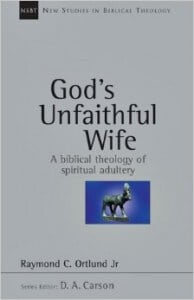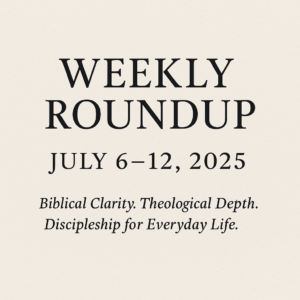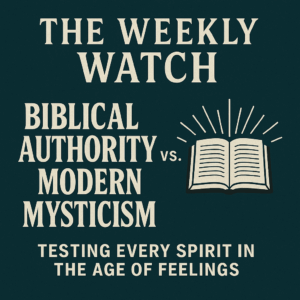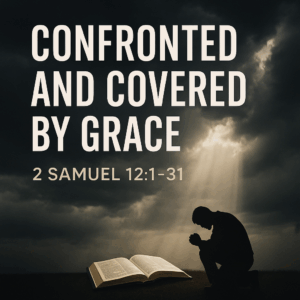⏱️ Estimated Reading Time: 4 min read
 An important element of sound Bible study is recognizing the patterns and principles and flow from Genesis to Revelation as consistent messages to the reader. One such pattern is that of God’s relationship with His people, namely what is described as a marriage relationship. Subsumed in that covenant relationship are guidelines that define what it looks like for this marriage to be healthy, vibrant, and as God intended. Things looked quite promising in the formative chapters of Genesis – at least until sin entered into the picture with its raging desire for self rather than loving God within the bond of covenant relationship. What we find throughout Scripture is God reaching out to His bride as the bridegroom to restore and redeem the called out bride. Unfortunately, more often than not, the bride was and is not always willing to abide by the terms of the marriage/betrothal agreement.
An important element of sound Bible study is recognizing the patterns and principles and flow from Genesis to Revelation as consistent messages to the reader. One such pattern is that of God’s relationship with His people, namely what is described as a marriage relationship. Subsumed in that covenant relationship are guidelines that define what it looks like for this marriage to be healthy, vibrant, and as God intended. Things looked quite promising in the formative chapters of Genesis – at least until sin entered into the picture with its raging desire for self rather than loving God within the bond of covenant relationship. What we find throughout Scripture is God reaching out to His bride as the bridegroom to restore and redeem the called out bride. Unfortunately, more often than not, the bride was and is not always willing to abide by the terms of the marriage/betrothal agreement.
While it may not seem at first glance a subject matter worth tracking through Scripture, in reality, looking closely at the topic of spiritual adultery is quite essential as it provides us an understanding of what God expects from us as well as being a teaching tool for grasping where spiritual adultery leads and how God responds. Ray Ortlund, Jr. in his excellent book God’s Unfaithful Wife: A Biblical Theology of Spiritual Adultery, walks the reader through what the Old and New Testament has to say on this issue, digging into the text along the way to extract sound theological nuggets on what exactly this has to do with us today.
As alluded to earlier, any successful biblical-theological endeavor must inherently begin in Genesis, especially when it comes to this subject matter. Ortlund aptly roots his discussion in those beginning chapters of Scripture, noting the significance of God’s creation of man and woman, in particular the relational elements that can be found in those chapters. Human marriage between the man and woman was to be an earthly reflection of God’s relationship with humanity. That foundational truth is something Ortlund returns to in the concluding chapters of this book when he examines how the New Testament reveals the relationship between the bridegroom (Jesus) and his bride (the people of God).
After discussing the foundation, Ortlund then proceeds to examine key Old Testament texts that demonstrate the tendency of God’s people to play the harlot and to chase after other husbands (i.e. false gods). This is where this book shines brightest, specifically in Ortlund’s salient analysis of these key passages and how they speak to the on again, off again (mostly off again) relationship God’s people had with their Creator despite a history replete with God doing the miraculous on their part. While most are likely familiar with the reality of this unfaithfulness and how it led to removal from the Promised Land, I submit the importance, most notably of the relational truths found in Scripture are often lost on us today. We have a hard time viewing ourselves as chasing after other gods like the Israelites, especially given there are not an Asherah pole in our homes, not do we set up an altar on a high hill or mountain. With that said, we have our own gods that we commit spiritual adultery with today and thus understand what Ortlund presents in this book is extremely important and relevant for the people of God in a day and age when spiritual adultery is on the rise.
The marriage motif and the ensuing spiritual adultery committed by the people of God from the time of Adam and Eve to this present day is an important subject matter for us to ponder and understand. Ray Ortlund does a fantastic job of unpacking this topic from a biblical theological perspective, providing the reader with sound exegesis and practical application. God has called us to be His – a call to marriage. This involves faithfulness to the marriage contract provided to us in the pages of Scripture. Learning from the mistakes of our forefathers in the faith and identifying that even in the midst of our unfaithfulness, God remains faithful is a definite key to understanding what it means to grow in maturity in our relationship with our Creator. Ortlund’s book is a treasure trove of information on this subject matter and I highly recommend taking the time to read this helpful and important book.
This book is available for purchase from IVP Academic by clicking here.
I received this book for free from IVP Academic and the opinions I have expressed are my own. I am disclosing this in accordance with the Federal Trade Commission’s 16 CFR, Part 255 : “Guides Concerning the Use of Endorsements and Testimonials in Advertising.”




